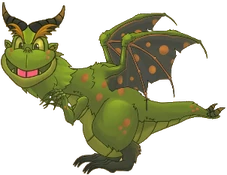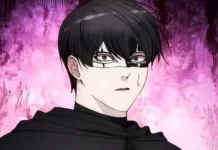Dragons have held a timeless fascination in the human imagination, and among these mythical beasts, the Greenge Dragon stands as an enigmatic and captivating figure. This legendary creature, often depicted in various cultures with unique twists, has sparked curiosity and awe for centuries. In this exploration, we dive into the heart of the Greenge Dragon’s lore, uncovering its origins, symbolism, and cultural significance.
The Legend of the Greenge Dragon
At the crossroads of folklore and fantasy, the Greenge Dragon emerges from the annals of mythology. While its portrayal varies across different cultures, its essence as a powerful and mysterious being remains constant. From medieval European legends to ancient Chinese tales, this creature has woven itself into the tapestry of countless narratives.

One such tale traces its roots to the medieval castles of Europe. In these stories, the Greenge Dragon often guards hidden treasures within deep caves, challenging brave knights to prove their valor and wit. Similarly, Eastern cultures infuse the dragon with auspicious symbolism, associating it with rain, water bodies, and bountiful harvests.
As the Greenge Dragon’s legend traveled across continents, its embodiment shifted while maintaining its role as a harbinger of adventure, strength, and awe.
Greenge Dragon’s Characteristics and Appearance
Imaginations have sculpted the Greenge Dragon into an awe-inspiring creature with a diverse array of appearances. It’s often envisioned with emerald or jade-green scales that shimmer in the sunlight. These scales, sometimes described as iridescent, create an illusion of movement even when the dragon is still. A sinuous body, strong wings, and sharp claws complete its majestic form.
In certain cultural iterations, the dragon’s size varies, ranging from colossal and mountainous to sleek and serpentine. While interpretations may differ, their allure remains universal.
The Cultural Significance
The Greenge Dragon’s influence transcends myth and folklore, leaving an indelible mark on cultures around the world. Its presence is etched into ancient artworks, tapestries, and pottery, representing more than just a fantastical creature. Rather, it embodies values deeply rooted in human societies.
In Chinese culture, the dragon symbolizes power, prosperity, and good fortune. It’s a revered emblem of imperial authority and a force that controls the elements. In contrast, Western interpretations often cast the dragon as a symbol of strength, bravery, and the triumph of good over evil.
As civilizations evolved, so did the dragon’s significance. It found its way into literature, becoming a protagonist or antagonist in epic tales. Even in contemporary times, its symbolism hasn’t waned; instead, it’s transformed to mirror the values and challenges of each era.
Stay tuned for the upcoming sections where we will delve further into the interpretations and symbolism of the Greenge Dragon, its portrayal in modern culture, and the scientific and cultural origins that shape its enduring mystique. Join us as we journey into the heart of this mythical marvel.
Interpretations and Symbolism
Beyond its physical depiction, the Greenge Dragon encapsulates a world of symbolism that resonates with the human psyche. Interpretations of the dragon’s meaning vary, yet common threads emerge, weaving a tapestry of significance that transcends time and culture.
In Eastern traditions, the dragon is often associated with primal forces of nature. It embodies water and rain, essential for sustenance and growth. As such, the dragon symbolizes life, fertility, and abundance. Its serpentine form represents the fluidity of existence and the cycles of creation and destruction.
In the West, the dragon takes on multifaceted symbolism. Its fierce appearance embodies the challenges and adversities one must overcome, symbolizing the hero’s journey. Knights of medieval lore-facing dragons are metaphors for personal growth, courage, and conquering inner demons. Furthermore, the dragon’s hoarded treasures can represent the elusive pursuit of wealth and power, prompting reflection on the ethical implications of ambition.
The Greenge Dragon in Modern Culture
As civilizations transitioned into the modern era, the Greenge Dragon adapted seamlessly into contemporary mediums. Literature, cinema, and video games have breathed new life into this age-old creature, offering fresh perspectives while retaining its timeless allure.
In literature, authors reimagined the Greenge Dragon’s role, infusing it with psychological depth. It became a metaphor for the unknown, representing humanity’s innate curiosity and the uncharted territories of the mind. In cinema, breathtaking visual effects have brought dragons to life, captivating audiences with their grandeur and power. These adaptations reflect society’s fascination with the unknown, the fantastic, and the extraordinary.
In pop culture, the dragon has found a place of honor, inspiring everything from fashion to sports team mascots. It has become a symbol of rebellion, strength, and uniqueness, embodying the essence of standing out in a world of conformity.
Scientific and Cultural Origins
While the Greenge Dragon’s existence is firmly rooted in mythology, various theories seek to explain its origins in a scientific and cultural context. Some speculate that early discoveries of dinosaur fossils might have contributed to the dragon mythos. Ancient civilizations encountering large reptile bones could have woven these findings into tales of magnificent creatures.
Moreover, the dragon’s features could be a composite of various animals, blending the attributes of reptiles, birds, and mammals. These amalgamations may have been inspired by encounters with exotic and unfamiliar wildlife.
Natural and Nurtured: Greenge Dragon’s Evolution
The Greenge Dragon’s evolution is a testament to the dynamic nature of cultural storytelling. From its humble beginnings as a guardian of treasures to its portrayal as a symbol of heroism, the dragon’s journey reflects the ever-shifting values of societies.
As cultural norms shifted, so did the dragon’s representation. In the modern era, it has become a source of inspiration for creativity and imagination. Its evolution mirrors humanity’s quest for understanding, growth, and adaptability.
Unraveling the Greenge Dragon: Separating Fact from Fiction
While the Greenge Dragon exists purely in the realm of mythology, misconceptions, and misinterpretations have shaped its image over time. Separating fact from fiction requires careful examination of historical records and cultural contexts.
Some notions, like the idea of dragons hoarding treasure, are likely symbolic rather than literal. The connection between dragons and wealth may reflect the complex relationship humans have with material desires and power.
Conclusion
The Greenge Dragon, with its diverse cultural interpretations, enduring symbolism, and continued relevance in modern culture, remains an evergreen emblem of our shared human imagination. It serves as a reminder that the threads of myth and reality are intertwined, influencing each other in ways that shape our perceptions of the world and ourselves. As we continue to explore the depths of mythical beasts like the Greenge Dragon, we uncover not just their stories, but the essence of our own human experience.
FAQs About the Greenge Dragon: Unveiling Myth and Mystery
1. What is the Greenge Dragon?
- The Greenge Dragon is a mythical creature found in various cultural legends and folklore. It’s often depicted as a powerful, serpentine creature with emerald or jade-green scales.
2. What cultures feature the Greenge Dragon?
- The Greenge Dragon appears in both Eastern and Western cultures, with varying interpretations. In the East, it’s often associated with auspicious symbolism, while in the West, it embodies strength and challenge.
3. What does the Greenge Dragon symbolize in Eastern cultures?
- In Eastern cultures, the Greenge Dragon symbolizes elements like water, rain, and fertility. It represents life, abundance, and the cyclical nature of creation.
4. How does the Greenge Dragon relate to heroism in Western mythology?
- In Western mythology, the Greenge Dragon is often portrayed as a challenge that heroes must overcome. These stories symbolize personal growth, courage, and the journey to conquer inner fears.
5. Can dragons be found in modern literature and media?
- Absolutely. Dragons have been reimagined in modern literature, movies, and even video games. They’ve evolved to symbolize curiosity, the unknown, and the extraordinary.
6. What inspired the concept of dragons in mythology?
- The inspiration for dragon myths could come from various sources, including early discoveries of large reptile fossils and the amalgamation of different animal attributes in cultural storytelling.
7. Are there scientific explanations for dragon myths?
- While dragons are purely mythical, some suggest that early encounters with dinosaur fossils or exotic animals could have influenced dragon legends.
8. How has the Greenge Dragon evolved?
- The Greenge Dragon has adapted to changing cultural values, evolving from a treasure guardian to a multifaceted symbol of strength, rebellion, and creativity.
9. What role do dragons play in contemporary culture?
- Dragons have become pop culture icons, inspiring everything from fashion trends to sports mascots. They symbolize uniqueness and the desire to stand out.
10. Are there any common misconceptions about the Greenge Dragon?
One common misconception is that dragons hoard treasure in a literal sense. In reality, this might symbolize the human relationship with wealth and power.
11. How has the depiction of dragons differed across cultures?
Different cultures have portrayed dragons in various forms, with unique attributes and symbolism. These variations reflect cultural values and perspectives.
12. What does the Greenge Dragon teach us about human imagination?
The Greenge Dragon showcases the boundless capacity of human imagination to create powerful symbols that transcend time and culture.
13. Can dragons be seen as a metaphor for personal challenges?
Yes, in many stories, facing dragons can symbolize confronting and overcoming personal challenges, fears, and obstacles.
14. Why are dragons often associated with power and authority?
The dragon’s majestic appearance and mythical abilities have led it to be associated with power and authority in various cultures.
15. Are there any rituals or celebrations involving dragons?
Yes, many cultures celebrate dragon-related festivals, often featuring dragon dances and parades to commemorate the creature’s symbolism.
16. Are there any historical artifacts featuring the Greenge Dragon?
Yes, historical artifacts such as pottery, paintings, and sculptures often depict the Greenge Dragon, showcasing its enduring cultural importance.
17. What is the significance of dragons in literature?
Dragons in literature often serve as complex characters, representing a wide range of themes including heroism, danger, and the unknown.
18. How do dragons challenge our perceptions of reality?
Dragons challenge our perceptions by blurring the lines between reality and fantasy, sparking curiosity about what lies beyond our understanding.
19. How has modern media redefined the image of dragons?
Modern media has transformed dragons from mythical beings to relatable characters, exploring their emotions, motives, and inner worlds.
20. What makes the Greenge Dragon an enduring symbol?
The Greenge Dragon’s enduring symbol lies in its ability to adapt across cultures, periods, and forms of media, resonating with the timeless human fascination with the extraordinary.


